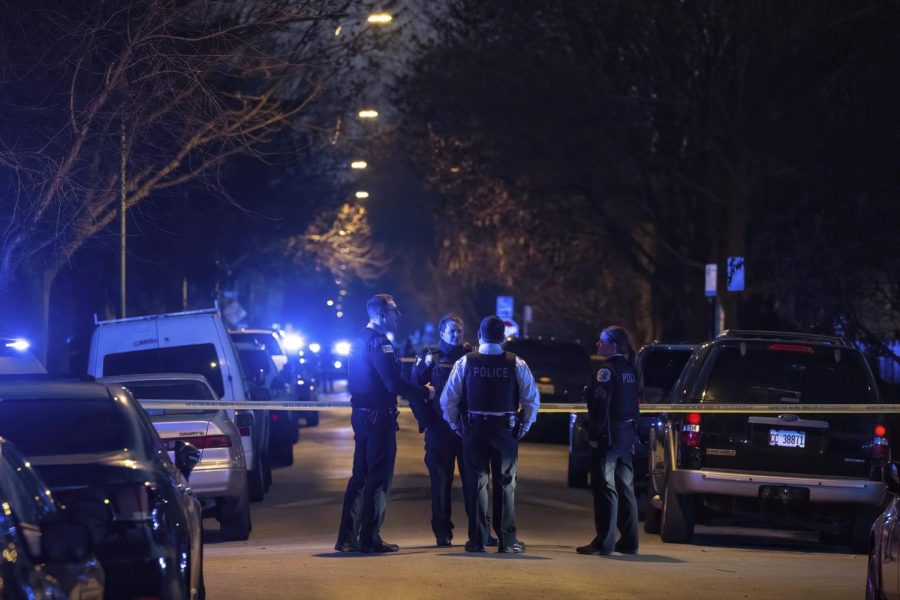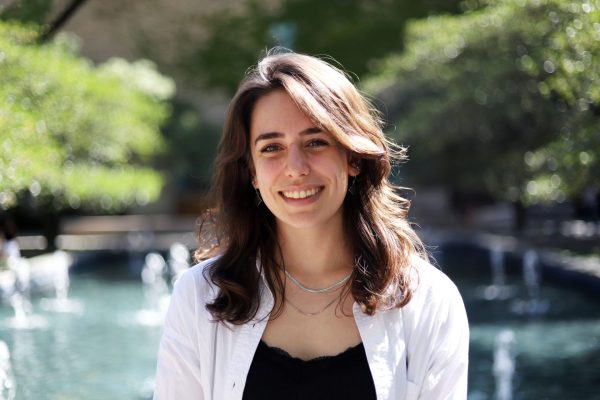Three years ago, schools across America shut down after the former U.S. President Donald Trump declared a public health emergency due to Covid-19. Now, Chicagoans still fear for their safety, not because of a deadly virus, but because of the increase in violent crimes since the start of the pandemic.
DePaul freshman Carla Barry-Esteban, who has lived in Chicago her entire life, said safety is a crucial issue in the city, especially since the pandemic.
“I feel like the pandemic made taking the train a lot scarier,” she said. “Chicago [already] has a huge problem with violence.”
From 2020 to the end of 2022, crime in Chicago has gone up by 45%, according to the most recent crime report released by the Chicago Police Department.
Of the crimes listed, the report includes robberies, murder, criminal sexual assault, aggravated battery, burglary, theft and motor vehicle theft.
In those two years, reports of criminal sexual assault, robbery, theft and motor vehicle theft all increased substantially.
While some areas of Chicago are less impacted by crime, data shows neighborhoods on the South and West Sides experience higher rates of crime than the rest of the city.
According to city data last updated Jan. 23, 2023, the top five neighborhoods with the highest rates of armed robberies were Austin, North Lawndale, West Garfield Park, Humboldt Park and Roseland.
Xavier Perez, a criminology professor at DePaul who specializes in Latino crime said these neighborhoods experience higher rates of crime due to decades of disinvestment by the city.
“The minority communities are often not invested in, in terms of commerce, economic opportunities, opportunities for the youth,” Perez said. “It’s a legacy of racism that exists in Chicago.”
The most recent census data on socioeconomic indicators in Chicago lists all five of these neighborhoods as disadvantaged due to factors like unemployment after the age of 16, crowded living conditions and households below the poverty line.
According to the data, 9.4% of West Garfield Park’s population lives in overcrowded housing, 41.7% of households are below the poverty line and 25.8% of the population over the age of 16 is unemployed.
For Perez, this data is not surprising because these neighborhoods are predominantly Black communities that have been disadvantaged since the 1900s.
“[They’re] some of the most disinvested communities in the city,” Perez said.
Perez attributes the high rates of crime in Chicago’s South and West Side neighborhoods to redlining practices that began in the 1930s. He said segregation of minority communities and the tendency to invest primarily in downtown areas of commerce have contributed to crime.
“Communities that have higher rates of poverty have less resources, less economic opportunities, so you would see the crime [increase],” Perez said. “These neighborhoods are segregated, not by accident. Decades of disinvestment by the city … and that’s principally parts of the West Side that have just been abandoned by the downtown area.”
To Perez, the pandemic greatly contributed to the rise in crime.
“We’re seeing a lagged effect as a result of 2020,” Perez said.
Teny Gross, the executive director for the Institute for Nonviolence Chicago, a nonprofit devoted to decreasing violence in Chicago, said the city’s increased access to assault weapons has affected crime rates across the city.
“If we had less guns, and if there was a smarter way of who gets them … and they’re not just flooding neighborhoods, we would have a lot less to do,” Gross said.
To Perez, violence prevention programs are imperative to tackling crime systemically, but since these programs could not work during the pandemic, it greatly contributed to the rise in crime.
“Young people come downtown because their neighborhoods aren’t safe,“ Perez said. “If we invested in those communities, made those neighborhoods safer … then we keep kids in their home communities, make it a place where people would want to go there.”
Like Perez, Gross also believes youth programs are influential in helping young people avoid crime and to invest in minority communities. He said his organization works with the city’s youth to encourage nonviolent behaviors from a young age.
“We try to reach the highest risk young people in neighborhoods we work at [like] Austin, West Garfield [and] Back of the Yards,” Gross said.
However, Gross said access to illegal guns in the city has made their job more difficult. Because they are easily accessible, high risk youth are able to use guns to harm themselves or others because they are surrounded by violence everyday.
“We try [to] offer them alternatives and a way out, [but] sometimes they’re feeling trapped,” Gross said. “There are a lot of guns around them so some of them feel they need them for their own protection.”
Although youth programs and restorative justice initiatives are influential in curbing crime, Perez said poverty, segregation and disinvestment factors must be addressed before communities can combat violent crime rates.
Perez believes the next mayor of Chicago must address these factors if they hope to tackle the rising crime rates in the city.
”The candidate that is able to secure a more centrist argument is actually going to be the most effective,” he said. “Law and order is not going to work in some of the communities that have historically negative experiences with the police.”
According to the census data, the Near North Side area has the highest income rate with an average of $88,669 per year, compared to regions on the Far South and West Sides which have an average income of $10,000 or less.
Perez said these areas are predominantly impoverished, minority communities.
“They’re predominantly African American, they’re predominantly poor,” Perez said. “When you see crime concentrated in those areas, it’s not by accident.”
The two mayoral candidates have contrasting views on how to tackle crime. While Paul Vallas wants to add more police officers to make the city’s streets safer, Brandon Johnson wants to reallocate city funds to increase spending on social services.
Perez does not believe that Vallas’ tough approach to crime will be beneficial for communities on the South and West sides of the city.
“Vallas’ [policies on] law and order, we’ve seen those in the past,” he said. “They might provide some immediate results, but in the long term, we just don’t see those policies as effective.”
Barry-Esteban said in her experience, people’s sense of safety is largely impacted by the neighborhood they live in.
“I live in a privileged place where crime isn’t always very prominent, but I genuinely believe that funding the neighborhoods in which there is the most violence is crucial,” she said.
For Perez, both Johnson and Vallas’ approaches to tackling crime might work for some communities, but not the city as a whole.
“We also need something that’s going to stop people from committing crimes tomorrow,” he said.



